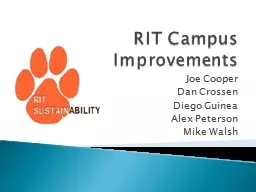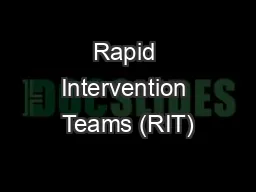PPT-RIT Campus Improvements
Author : tatyana-admore | Published Date : 2020-01-28
RIT Campus Improvements Joe Cooper Dan Crossen Diego Guinea Alex Peterson Mike Walsh Ritter Arena Improvements Joe Cooper Dan Crossen Diego Guinea Alex Peterson
Presentation Embed Code
Download Presentation
Download Presentation The PPT/PDF document "RIT Campus Improvements" is the property of its rightful owner. Permission is granted to download and print the materials on this website for personal, non-commercial use only, and to display it on your personal computer provided you do not modify the materials and that you retain all copyright notices contained in the materials. By downloading content from our website, you accept the terms of this agreement.
RIT Campus Improvements: Transcript
Download Rules Of Document
"RIT Campus Improvements"The content belongs to its owner. You may download and print it for personal use, without modification, and keep all copyright notices. By downloading, you agree to these terms.
Related Documents














